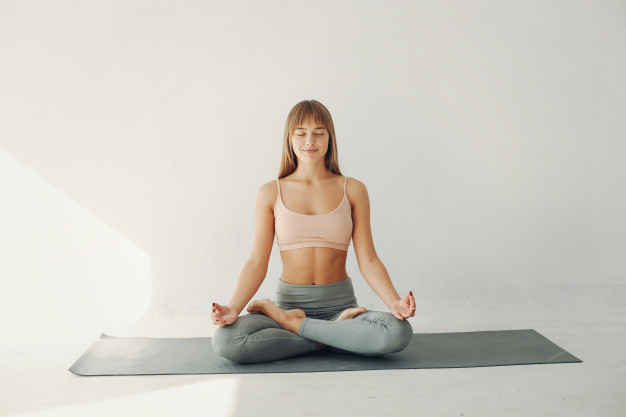You can connect with your mind, body and spirit through yoga poses by ensuring that your practice matches with your persona and your physical needs. This informative guide can help you pick the right yoga asanas for yourself.
If you are going to try yoga for the first time, you are exposed to a wide range of options. There are many yoga exercises and yoga asanas to choose from. With any yoga exercise, you can perk up your strength, elasticity, and balance. And all yoga poses liberate tension and stress in your body, calm your mind, and help you relax. To get the most benefit from yoga exercises, you should choose a style that goes with your existing fitness level, as well as your personality and goals for practicing yoga asanas. Try different yoga courses and teachers, and see what works for you the most.

Step 1: Consider why you practice:
First of all, you need to consider your reasons for practicing yoga exercises, whether you are searching for a perspiring workout, or are you want to experience yoga’s more healing benefits or, you are looking for a spiritual experience or respite from back pain.
Step 2: Be straightforward about your personal needs:
What you should do next is to consider your liking and requirements. You should consider whether you want personalized attention or are you inspired by a social group. Decide, whether you like a strict or a compassionate approach. And then be truthful to yourself regarding your potential physical, financial, and time limitations.
Also Read: Yoga Poses to keep Diabetes in Control
Step 3: Shop around for your yoga style:
The truth is that you may not even identify what you’re looking for until you start trying on different yoga poses, but you’ll make out when you’ve found the yoga pose that’s exact for you. Be attentive to how your body feels during and after class. The rate and level of yoga exercise should feel tricky but not overtaxing, and you are supposed to feel calmer, open, and connected to your body after class and, not left more stressed out and disconnected. Pay heed to the emotional and mental transformations that occur throughout class, too. Observe what inspires you and, whether you’ve gained or lost interest. The best sign of a good fit is that you’ll want to take the class again.
There are different yoga exercises which you can try. Some of them are listed below:
-
- Ashtanga Yoga:
It’s a challenging yoga exercise wherein you do a nonstop series of yoga poses. It also uses a special breathing method that helps focus the mind and control the flow of breath. - Bikram Yoga:
It’s a challenging yoga exercise as a sequence of 26 yoga poses are to be performed in a very hot room (above 100 degrees). Before starting this “hot” style of yoga, talk to your doctor if you have any medical condition, such as hypertension or diabetes. - Hatha Yoga:
It’s a gentle yoga asana. It comprises of a few different easy yoga styles that are combined together for beginners learning to do basic yoga poses. - Power Yoga:
Power yoga is one of the most challenging and athletic forms of yoga. It builds upper-body vigor as well as elasticity and balance. You flow from one yoga pose to another. - Sivananda Yoga:
It’s a gentle form of yoga including 13 poses and lying down in between the poses. Sivananda yoga is simply adaptable to people of different physical abilities. - Vini Yoga:
It’s a gentle yoga exercise in which you focus on how your breath moves through your body and affects each pose. It’s not so much about doing every pose accurately. The long, deep stretches of this style of yoga are ideal for beginners and people who want to enhance flexibility, recover from injury, body awareness, and relaxation.
- Ashtanga Yoga:
Also Read: Yoga For Pregnant Women
You know you’ve found the right yoga exercise for yourself when…
When you attend your class, tune in to your internal voice and make out if you observe and feel these major fundamentals of a well-taught class:
You feel secure and supported. Class warms up at a suitable pace, and the teacher has clear control of the room, acknowledging new students.
Instructions given by the teacher are well heard and understood by you.
The teacher adjusts his or her teachings to the ability and skill level of the students present.
The teacher respects and honors your physical limitations.
The teacher attends everyone.
The teacher is easily accessible, and it’s easy to ask questions and share concerns during or after class.
You feel motivated, either during or after class or, by both.
Conclusion:
Search until you find a yoga exercise that resonates for you right now, and don’t forget to stay open-minded. You may find that your journey soon takes you to another yoga exercise, or even branch, of yoga.
Read More: Yoga Can Help in Psoriatic Arthritis Pain



